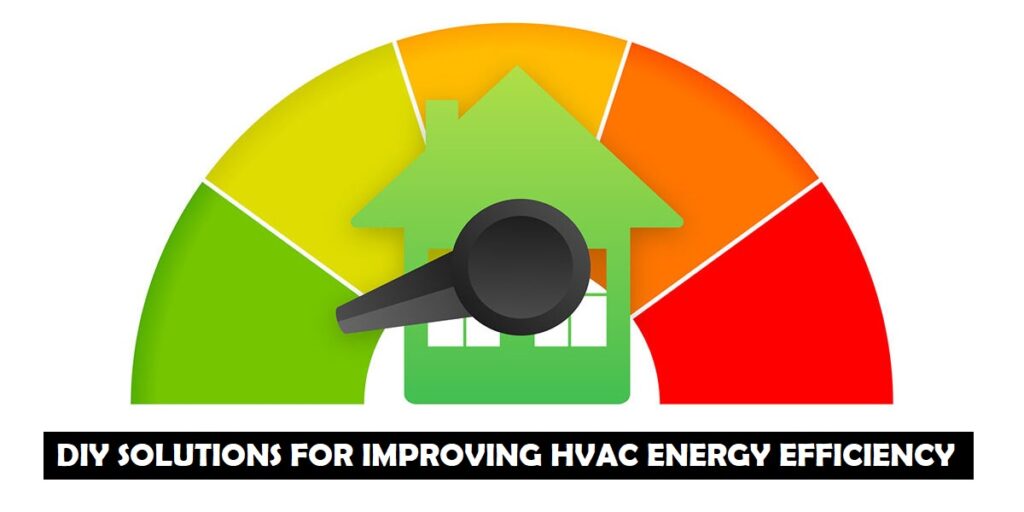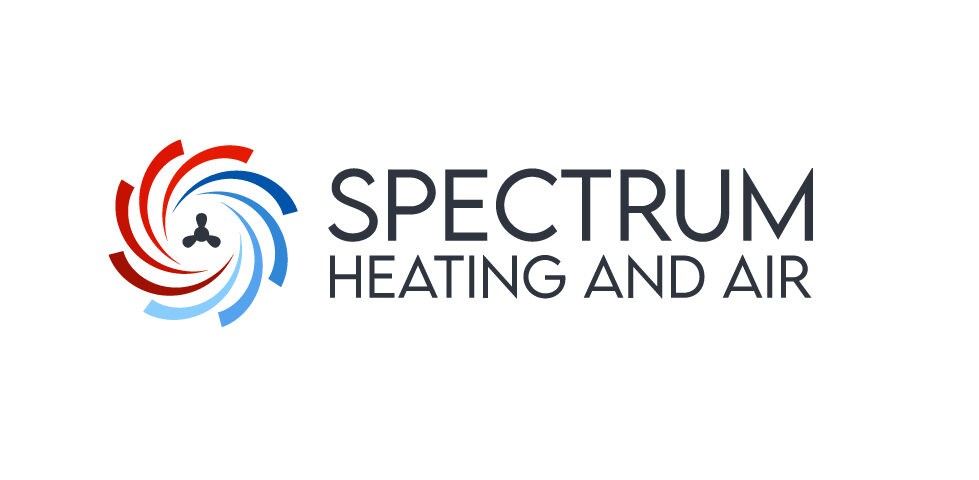In today’s world, energy efficiency is a topic that’s on everyone’s mind. As energy costs rise and environmental concerns grow, people are looking for ways to make their homes and businesses more energy-efficient. One area where this is particularly important is in heating, ventilation, and air conditioning (HVAC) systems. These systems are responsible for a significant portion of a building’s energy consumption. The good news is that there are indeed some DIY solutions for improving HVAC energy efficiency. In this article, we’ll explore these options, helping you make your HVAC system more eco-friendly and cost-effective.

Understanding the Importance of HVAC Energy Efficiency
Before diving into the DIY solutions, it’s essential to understand why improving HVAC energy efficiency matters. Here are some compelling reasons:
1. Lower Energy Bills
One of the most apparent benefits of an energy-efficient HVAC system is reduced energy bills. When your system operates more efficiently, it consumes less energy, leading to lower monthly expenses.
2. Environmental Impact
Reducing energy consumption also has a positive impact on the environment. A more efficient HVAC system reduces greenhouse gas emissions, helping combat climate change.
3. Enhanced Comfort
An efficient HVAC system can provide better indoor comfort. It regulates temperature and humidity more effectively, creating a more pleasant living or working environment.
4. Prolonged Equipment Lifespan
Efficiency improvements can extend the life of your HVAC equipment, reducing the need for costly replacements.
DIY Solutions for Improving HVAC Energy Efficiency
Now, let’s explore some practical DIY solutions for enhancing the energy efficiency of your HVAC system:
1. Regular Maintenance
Regular maintenance is the cornerstone of HVAC energy efficiency. Start by changing or cleaning your HVAC system’s air filters every one to three months. Dirty filters restrict airflow, forcing your system to work harder and consume more energy. A clean filter ensures optimal airflow and efficiency.
In addition to filter maintenance, schedule annual professional HVAC inspections. These inspections can uncover hidden issues, such as refrigerant leaks or ductwork problems, that may be affecting your system’s performance. Professional technicians can also fine-tune your system to operate at peak efficiency.
2. Programmable Thermostats
Installing a programmable thermostat empowers you to take control of your HVAC system’s operation. You can set different temperature profiles for various times of the day or week. For example, you can program it to lower the temperature when you’re away at work and raise it before you return, reducing energy usage during idle hours.
Modern smart thermostats take this a step further by learning your preferences and adapting to your schedule. Some can even be controlled remotely via smartphone apps, allowing you to make real-time adjustments, further optimizing your system’s efficiency.
3. Sealing Leaks
Air leaks in your home can be a major source of energy waste. Gaps around windows, doors, and other openings allow conditioned air to escape and outdoor air to infiltrate. To identify and seal these leaks, perform a thorough inspection of your home’s exterior.
Use caulk to seal gaps and cracks around window and door frames, while weatherstripping can be applied to doors to create a tight seal when closed. For larger gaps, consider expanding foam insulation. These measures prevent conditioned air from escaping, ensuring your HVAC system doesn’t have to work overtime.
4. Insulation
Proper insulation is key to maintaining a comfortable indoor environment and reducing the load on your HVAC system. Insulation helps regulate temperature, keeping warm air inside during winter and preventing heat from entering during summer.
Start by assessing your attic, walls, and basement for adequate insulation. You can add fiberglass or foam insulation to these areas as needed. Well-insulated spaces require less heating and cooling, resulting in energy savings and increased comfort.
5. Ventilation
Effective ventilation promotes air circulation, helping your HVAC system distribute conditioned air more efficiently. Make sure that vents and registers in your home are not blocked by furniture or other obstructions.
Ceiling fans are also valuable tools for improving air circulation. In the winter, set them to run in reverse to push warm air down from the ceiling. In the summer, use them to create a cooling breeze, allowing you to raise your thermostat a few degrees without sacrificing comfort.
6. Shade and Window Treatments
During the hot summer months, solar heat gain through windows can significantly increase the cooling load on your HVAC system. To combat this, use shades, blinds, or curtains to block direct sunlight during the hottest parts of the day.
Investing in reflective window films or insulated window panels can also help reduce heat gain and loss, making your HVAC system’s job easier.
7. Energy-Efficient Appliances
When upgrading appliances, including your HVAC system, look for products with a high SEER rating. SEER (Seasonal Energy Efficiency Ratio) measures the cooling efficiency of air conditioners and heat pumps. The higher the SEER rating, the more energy-efficient the unit is.
Choosing energy-efficient appliances may require an initial investment but can lead to substantial long-term savings through reduced energy consumption.
8. Duct Sealing
Leaky ducts can lead to significant energy loss. Air escaping from ducts before reaching its destination wastes energy and reduces the effectiveness of your HVAC system.
Inspect your ductwork for gaps, holes, or loose connections and seal them with duct tape or mastic sealant. Properly sealed ducts ensure that the conditioned air reaches its intended destination, reducing energy waste.
9. Regular Filter Replacement
Regular filter replacement is an often overlooked yet critical aspect of HVAC maintenance. Clogged filters restrict airflow, forcing your system to work harder to maintain the desired temperature.
Check your filters regularly and replace them according to the manufacturer’s recommendations. High-efficiency filters may need replacement less often but offer better air quality and system efficiency.
10. Proper Sizing
Ensuring your HVAC system is appropriately sized for your space is essential. An oversized system can cycle on and off too frequently, leading to inefficient operation and increased wear and tear.
Consult an HVAC professional to assess your home’s heating and cooling needs and select the right-sized system for optimal efficiency and comfort.
11. Use Ceiling Fans Wisely
Ceiling fans can help maintain a comfortable indoor environment and reduce the load on your HVAC system. In the winter, run them in reverse to circulate warm air. In the summer, use them to create a cooling breeze, allowing you to set your thermostat a few degrees higher.
Remember to turn off fans when leaving a room, as they only provide a cooling effect when people are present.
12. Reduce Heat-Generating Activities
During the peak of summer, consider adjusting your daily routines to minimize heat-generating activities. For instance, cook during cooler parts of the day or use a microwave instead of the oven. These small changes can reduce the strain on your HVAC system.
13. Smart Home Integration
Integrating your HVAC system with a smart home system can bring automation and energy savings. Smart thermostats can adjust temperature settings based on your preferences and occupancy patterns. Some can even factor in weather forecasts to optimize heating and cooling.
14. Monitor Energy Usage
Use energy monitoring devices to track your HVAC system’s energy consumption. These devices provide real-time data and historical usage trends, helping you identify opportunities for further energy savings.
Being aware of how your HVAC system consumes energy allows you to make informed decisions and implement additional efficiency measures.
15. Professional HVAC Inspection
While many tasks can be completed as DIY projects, don’t underestimate the value of professional HVAC inspections. Trained technicians can identify and address issues that may be beyond your expertise.
By implementing these detailed DIY solutions, you can significantly enhance the energy efficiency of your HVAC system. Each step contributes to a more comfortable home, lower energy bills, and a reduced environmental footprint. Remember that improving HVAC energy efficiency is an ongoing process, and small changes can lead to substantial long-term benefits.
In conclusion, DIY solutions for improving HVAC energy efficiency are not only practical but also cost-effective. These measures empower homeowners to take control of their energy consumption, reduce environmental impact, and enhance indoor comfort. Whether through regular maintenance, smart thermostat installation, or better insulation, there are numerous avenues to explore. By adopting these strategies, you can make a meaningful contribution to energy conservation while enjoying the financial benefits of a more efficient HVAC system.




